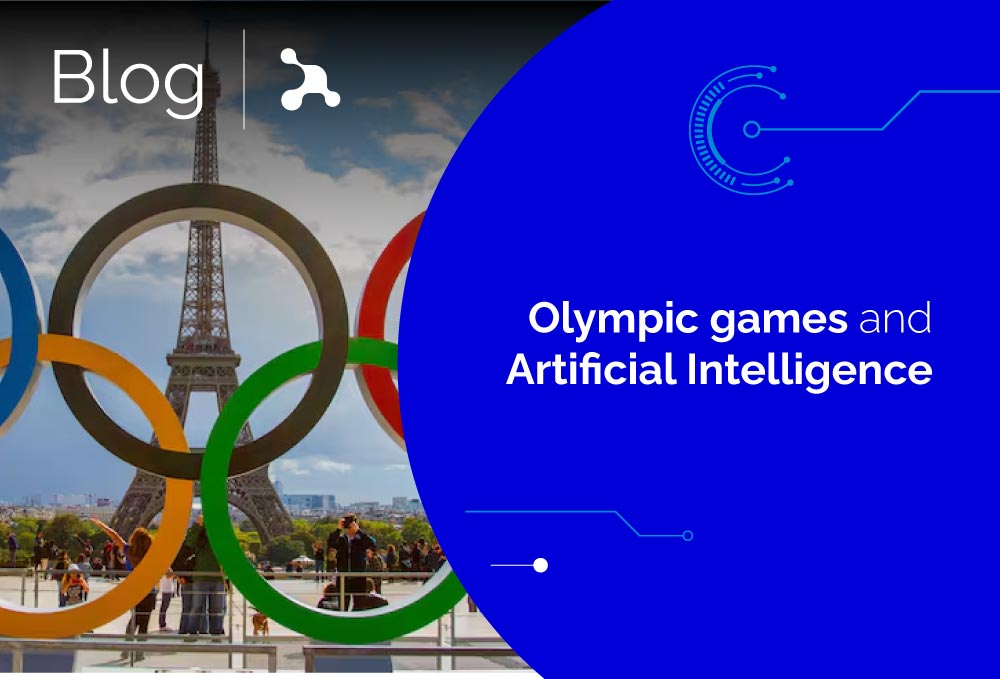With the advancement of technology, artificial intelligence (AI) has emerged as a powerful tool to enhance both athlete performance and spectator experience.
In this article, we will explore how AI is transforming the Olympics with specific examples from various sports.
Running: Performance Analysis and Injury Prevention
In running, AI is used to analyze the biomechanics of athletes. High-speed cameras and sensors capture every movement, and AI algorithms analyze this data to identify patterns that could lead to injuries. For example, in sprinting, AI can detect irregularities in a runner’s stride and suggest adjustments to improve efficiency and reduce the risk of injury.
Swimming: Technique Optimization and Personalized Training
In swimming, AI helps optimize swimmers‘ techniques. Computer vision systems analyze body position, speed, and stroke efficiency. A notable example is the use of underwater cameras and AI algorithms to correct stroke technique, allowing coaches to provide precise, real-time feedback to athletes.
Gymnastics: Routine Evaluation and Precision Improvement
Gymnastics is a sport where precision is key. Artificial Intelligence is used to evaluate gymnasts‘ routines by comparing their movements to ideal models. For example, during competitions, AI algorithms can analyze the execution of a routine and provide instant scores based on the accuracy and difficulty of movements, helping judges make more informed and fair decisions.
Cycling: Race Strategies and Energy Management
In cycling, AI is employed to develop race strategies and manage cyclists‘ energy. AI systems analyze real-time data such as speed, heart rate, and power output to recommend when to speed up or conserve energy. An example is the use of wearable devices that monitor performance and adjust strategies on the go, optimizing the chances of victory.
Basketball: Game Analysis and Tactical Improvement
In team sports like basketball, AI is used to analyze the game and improve tactics. Advanced video analysis systems break down each play, identifying patterns and areas for improvement. For example, AI can detect trends in opponents‘ behavior and suggest real-time tactical changes, providing a significant competitive advantage.
Fencing: Performance Monitoring and Real-Time Strategies
Fencing, a sport that requires speed and precision, also benefits from AI. Sensors in fencers‘ suits and weapons collect data on every movement. AI analyzes this data to identify patterns and suggest real-time strategies. A demonstration is the use of systems that alert coaches to changes in the opponent’s rhythm or technique, allowing quick adjustments in combat strategy.
Archery: Precision Analysis and Technique Improvement
In archery, precision is crucial for success. AI is used to analyze archers‘ techniques and improve their accuracy. Using sensors and cameras, AI algorithms can monitor posture, draw strength, and release angle. An example is the instant feedback AI provides on body alignment and arrow release, allowing archers to make immediate adjustments to improve accuracy and consistency.
Table Tennis: Play Analysis and Game Strategies
Table tennis is a fast-paced sport that requires agile reflexes and smart strategies. AI is employed to analyze matches in real-time, breaking down each play and movement. For example, AI systems can identify patterns in the opponent’s game and suggest tactics to exploit them. Additionally, Artificial Intelligence can analyze player performance, providing data on ball speed and spin, helping coaches plan more effective strategies.
Volleyball: Performance Optimization and Injury Prevention
In volleyball, AI helps optimize players‘ performance and prevent injuries. Sensors in players‘ shirts and shoes collect data on their movements and physical exertion. AI analyzes this data to identify signs of fatigue or injury risk. A representative case is the use of real-time monitoring systems that alert coaches when a player is at risk of overexertion injury, allowing preventive measures such as rotating players or adjusting training intensity.
As artificial intelligence becomes increasingly integrated into the sports arena, its impact on the Olympic Games is undeniable. These innovations not only improve the performance of athletes and the precision of coaches, but also elevate the spectator experience, making it more interactive and exciting. With each advance, we are witnessing a significant transformation in the way sports are played and enjoyed, paving the way for an Olympic Games that embraces the technological future and its limitless potential.




